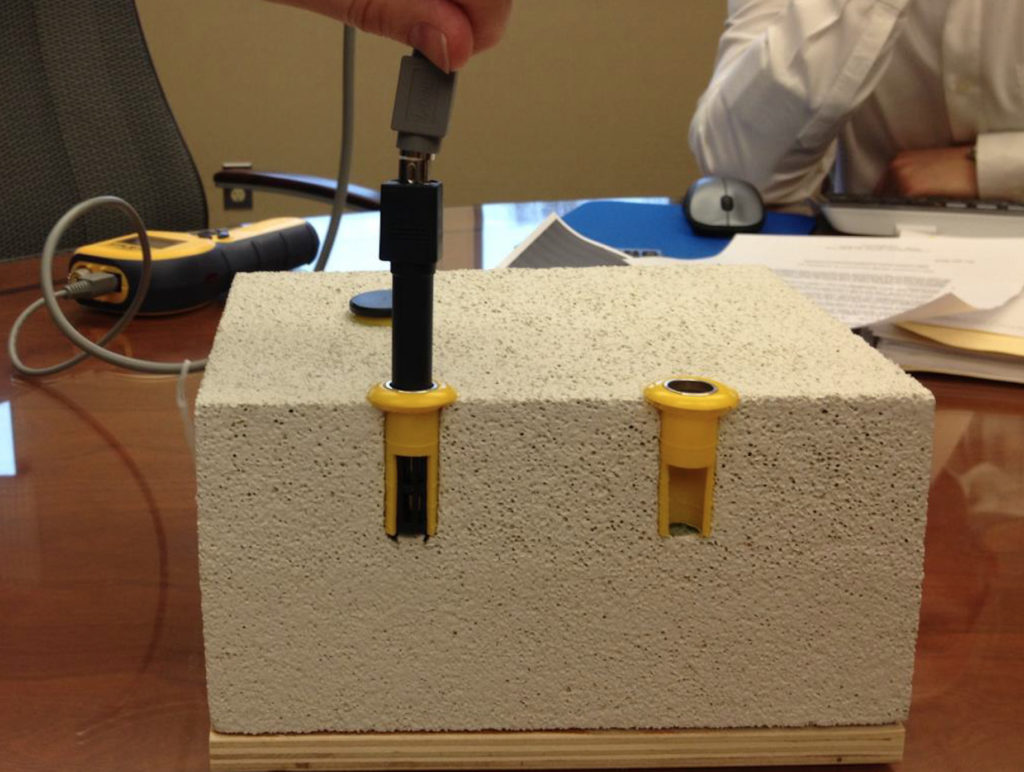
The number one cause of floor covering systems failing in the United States is due to moisture trapped within the cement. Most U.S. producers of floor coverings and coatings have historically used calcium chloride tests to evaluate concrete slabs, however, many companies are now switching over to the In-Situ testing method.
The American Society for Testing and Materials (ASTM) has standard protocols and methods of testing to evaluate the moisture levels in concrete flooring. The most current version of this regulation is known as ASTM F1869-16. Many of the country’s floor covering manufacturers are now suggesting or requiring the use of in-situ relative humidity, rather than the use of calcium chloride, as the data has determined this is the more accurate way to test for concrete dryness.
At Zenith Painting and Coatings, we use the highest quality materials and offer state-of-the-art in-situ probe testing to ensure we finish the job and leave our clients with concrete floor coatings that will last for years! Below we will cover some of the positives and negatives about each testing method.
Calcium Chloride or “Moisture Dome” Tests
Pros
- Results of calcium chloride testing continues to be accepted by most U.S. manufacturers of floor coverings however, it is not the preferred method.
- Testing is simple to perform and there are no major investments in equipment that are required.
Cons
- The subject building must be acclimated at the temperature and relative humidity levels anticipated during occupancy or use. This can be a difficult task to conduct on a new construction project without proper installation and temperature control.
- Some floor covering manufacturers no longer recognize Calcium Chloride test results for determining moisture levels in concrete.
- Calcium chloride tests measures moisture vapor emission from the surface of the concrete. It has been shown that the test determines if moisture is present in only the top 1/4 to 1/2 inch of the slab’s thickness. This means the concrete surface may not reflect moisture deep within or directly below the concrete slab which can cause major problems later on.
In-situ Relative Humidity Testing
Pros
- Results tend to be less impacted by ambient temperatures and relative humidity conditions than calcium chloride type tests. This means in-situ probes are able to generate more accurate data under conditions that may not be acceptable for calcium chloride testing.
- Many floor covering manufacturers are now requiring in-situ RH testing and others are listing it as the preferred test method overall.
- In-situ testing has the ability to be performed at multiple depths which will give contractors a better profile of moisture conditions throughout the thickness of the concrete slab.
- Testing can be performed with single-use probes which has brought the cost down to a level comparable with calcium chloride type tests.
Cons
- If a company decides to use reusable probes for testing, it can require a substantial investment in tools and equipment.
When you decide to hire Zenith for your concrete moisture mitigation testing, we will bring in all of our own equipment to assure the job is done right! Our dedicated team of professionals are here to help you navigate the regulations to ensure your concrete floor coatings will stick around for years to come. Call us today or visit our website for more information.
